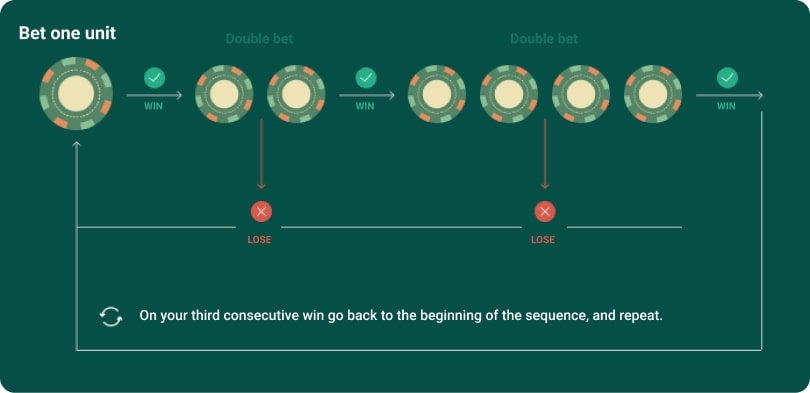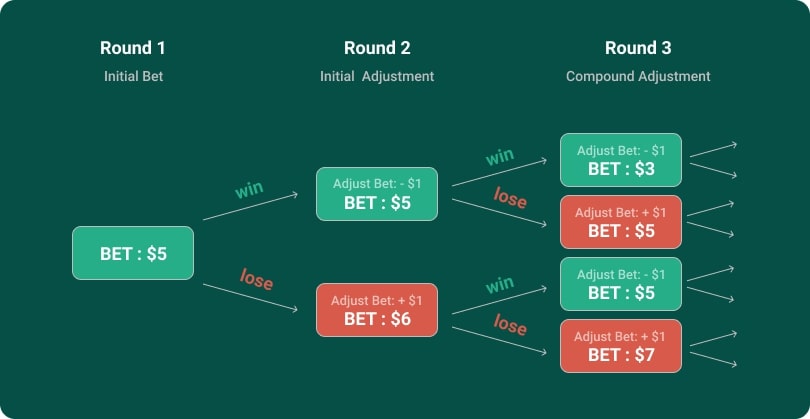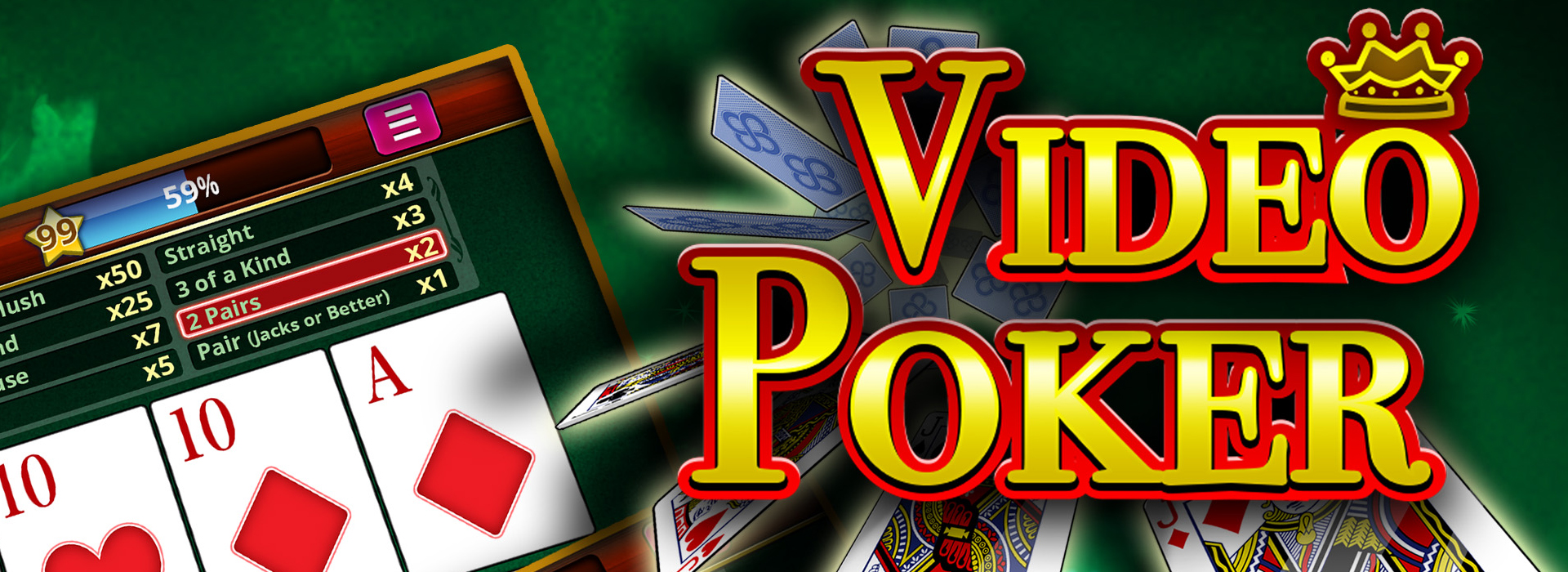Here we are going to explain several tricks to win at roulette. These are methods and strategies based on mathematics.
Anyway, as a first initial tip, we recommend, especially if you are a beginner, to start betting at online casinos that offer no deposit casino bonuses, this way you can bet without investing money, as they give you some initial money to try the games for free.
Another more interesting option, given that no deposit bonuses are usually quite low and yield little, is to take advantage of the welcome bonuses offered by casinos, as with these bonuses you multiply what you deposit for the first time.
The Martingale trick
The Martingale is one of the most classic strategies for winning at roulette.
It consists of playing the odds of hitting on odd/even or red/black, something that statistically has to happen sooner or later.
This trick to win at casino roulette consists of doubling your losing bets until you hit, so that you eventually make a profit.
The disadvantage of this system is that you have to have enough money to support the bet until you win, otherwise you could lose a lot of money.
The Reverse Martingale trick

This trick is a variation of the classic Martingale strategy.
Specifically, the system of this strategy is the opposite of the Classic Martingale: with this trick you double your bet when you win and bet less when you lose.
The idea is that if you are on a winning streak, you increase your winnings and if everything goes against you, you limit your losses.
To do this, you first need to find a roulette table with a low minimum bet and a high maximum bet. Once you have that, bet a small amount on red or black or odd or even or even or odd, or bet on a number between 1 and 18 or 19-36 (the idea is to always have a 50% chance of being right).
Keep playing until you win. Until then, keep betting the initial small amount on the same thing you have chosen (red/black, odd/even).
When you win, double the bet on winning spins and halve the bet when you lose.
To win money with this roulette trick, your goal is to get on a winning streak of bets and quit before you start losing again.
The Ends strategy
An Ends strategy is based on betting with horses (horses is a bet where the same chip covers two numbers) all numbers ending in the two digits that give the end its name.
That is to say, with a 1-4 ending you will bet with horses on all the numbers ending in either 1 or 4 (1, 4, 11, 14, 21, 24 and full to 34).
The idea of this trick to win at roulette is to cover a large percentage of numbers and not to lose too much when you lose and to maximise the number of spins with the win.
Other playable endings are, in addition to 1-4, 2-5, 3-6, 4-7, 5-8 and 6-9. The number to full house varies between 34, 35 and 36 depending on which endgame is chosen.
In the case of a 5-8 ending, the horses to be played are 5-8, 15-18, 25-28 and 35 as the star number. After marking these numbers, it is necessary to see how the table is to look for a strategy of complementation (this applies to any of the other possible endings).
With the end we have given as an example, 5-8, in the first column 25 and 28 will be selected with a profit, in the second column 5, 8 and 35, and in the third column 15 and 18. This same scenario in dozens would look like this: in the first dozen we have 5 and 8, of which the 5 is in the first sixteen.
In the second dozen we have 15 and 18, of which there is nothing in the fourth sixteen (19 to 24). Finally, in the last dozen, we have 25, 28 and 35; two in the fifth six and one in the sixth.
Looking at this scenario, it is clear that either the fourth sixteen or the first sixteen is not covered with a counter to recover. Personally, we recommend the first sixteen, then we will cover the second dozen, but you can also cover both if the game session goes well. In addition, you should cover the middle dozen and a column between the first and the third (preferably we will change as numbers come up).
With all this, 9, 26, 29 and 32 are left out, that is to say that we would lose everything with only these 4 numbers out of the 36 that there are. In 6 of the numbers there would be a gain and in one of them we would gain a lot. With 12 we would gain little and with another 12 we would not lose much.
The D’Alembert method

This trick is the result of the method developed by the French mathematician Jean Le Rond D’Alembert in the 18th century. It is a version of the Martingale and the Reverse Martingale with a lower risk of loss.
In the D’Alembert system the bet is reduced by one unit each time you lose. In other words, instead of doubling your bet every time you lose, you increase it by one dollar at a time.
The contra D’Alembert method
As you might guess, this trick has the same modus operandi as the Reverse Martingale trick. Instead of betting $1 more each time you lose, you bet $1 more each time you win and $1 less each time you lose.

